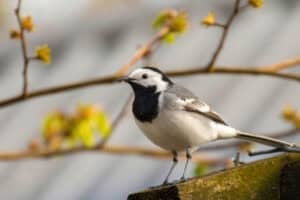Addo Elephant Park has relocated 42 elephants to new areas to control numbers and restore balance without resorting to culling.

Use of the word “culling” – especially of mammals that most people regard as sentient beings – causes immediate and almost universal outrage.
This is one reason why the Addo Elephant National Park (AENP) has adopted alternative strategies to reduce their burgeoning numbers in the reserve.
AENP is one of South Africa’s greatest conservation successes.
SA’s greatest conservation successes
When the park, located between Gqeberha (formerly Port Elizabeth) and Makanda (formerly Grahamstown) in the Eastern Cape, was proclaimed in 1931, there were 11 elephants remaining in the province where large herds once roamed.
Now more than 850 populate AENP alone.
ALSO READ: WATCH: Elephant chases away police at Kruger Park
Admittedly, the park has grown substantially in the past 94 years: from an initial 2 270ha on a single section around what is now known as Addo Main Camp, it now has a total footprint of nearly 300 000 hectares, of which 114 000 is a marine reserve.
The “terrestrial” component of AENP is spread over seven separate sections. It was to one of these sections, 50km from Main Camp, that AENP last week successfully relocated 42 animals as part of its ongoing effort to expand the Addo elephants’ range and restore ecological balance.
This newly secured section, known as Kabouga, measures 26 000ha and is exceptionally water-rich.
Elephants moved as families of females and offspring
The elephants that were moved comprised mainly families of females and their offspring.
Bulls are usually solitary and join the herd when females are in oestrus.
ALSO READ: Mammoth miracle for four Addo elephants who survived dramatic truck accident [VIDEO]
Among the animals transported to Kabouga were an elderly matriarch (the head of an elephant family) and a newborn calf.
Park manager Roland Januarie said: “Translocation between sections of the park have been successfully carried out over many years, based on the need to expand [the elephants’] range and to restore original ancient elephant corridors.”
The “broader conservation vision of repairing degraded ecosystems through species-led restoration” was also a large part of the motivation for moving five AENP elephants to a private nature reserve near Graaff-Reinet two months ago.
5 AENP elephants moved to private nature reserve near Graaff-Reinet
According to SANParks, under whose aegis AENP falls, “elephants are widely recognised as system engineers – their presence transforms landscapes in ways that benefit a vast array of other species.
“From opening up thickets and dispersing seeds to creating water access points, their natural behaviours support biodiversity and rejuvenate ecological processes that have been dormant in areas where elephants have long been absent.”
ALSO READ: Limpopo farmers use bee barriers to deter elephants
Relocations are expensive and the Kabouga project was underwritten by the Global Humane Society, a United States-based organisation that is the world’s largest certifier of animal welfare, helping to verify the humane treatment of more than one billion animals across the globe each year.
Another conservation initiative in full swing at AENP is widespread contraception among female elephants.
Adult elephants each consume hundreds of kilograms of vegetation each day and numbers must be carefully controlled to prevent extreme habitat degradation.
Carefull control
Species overpopulation has traditionally resulted in culling operations, but both AENP’s conservation and veterinary heads, Anban Padayachee and Dr David Zimmerman, are adamant this will not take place.
Zimmerman said that more than 280 females had been contracepted last year, but stressed that this was not the same as sterilisation. “The drugs we use mean that females have to be treated each year.”
ALSO READ: Six escaped elephants seen making their way back to the park, says SANParks
AENP elephant numbers will inevitably begin to show a significant decrease in the years to come but the overall population was healthy, he said, and ecological balance was being maintained.






